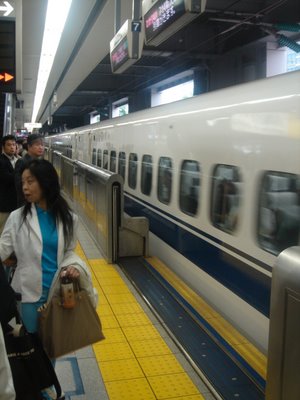From what I’ve read, Hokkai-en ranks among the better Chinese restaurants in Tokyo, many people claiming that it serves the best Beijing-style cuisine in the whole city. It opened about 20 years ago and quickly grew a reputation for offering authentic, high-quality dishes.
I’m also told that the yakuza dine at Hokkai-en a lot, which could be another reason why I advocated for taking-out rather than dining-in. Perhaps subconsciously I feared the negative ramifications of a misplaced shrimp shell. I could imagine it all unfolding in my head like that infamous restaurant scene in the movie Pretty Woman…with a few extra gruesome details. I accidentally flip a clam or mussel onto a nearby table and next thing you know, I leave the restaurant with one less limb than I came in with.
When trying to place our order and ask for dish recommendations, the hostess had trouble communicating with us. She spoke no English and very little Japanese. One of the waitresses came over and noticed I was of Chinese ethnicity and started speaking Mandarin to me. Well, needless to say, she wasn’t much help either because being the disgrace that I am to my ancestors, I can’t speak a word of my native language. We ended up just pointing to the dishes that looked interesting to us.
 Sauteed pea-pod stems
Sauteed pea-pod stemsThe pea pod stems were pretty similar what I’m used to having at the Cantonese-style restaurants I eat at – very garlicky.
 Pan-fried flat noodles with beef
Pan-fried flat noodles with beefWe wanted a noodle dish, so I suggested this dish, which I assumed was Hokkai-en’s version of gwun chow gnor hor, a very standard dish in Chinese cuisine. Their version was okay – a tad dull I thought. I’ve definitely had much better before.
Beef and broccoli with oyster sauce
Beef and broccoli is another dish I always seem to order when I have Chinese food, so it was a no-brainer to order this. It turned out pretty tasty, and the beef was tender.

Fried Rice
I think we ordered this just so we could have some rice to go along with the meal. It was good but nothing too memorable.

Sauteed jumbo prawns
These prawns were by far my favorite. They were huge, succulent and really quite tasty smothered in the light sauce with a hint of garlic and leeks.
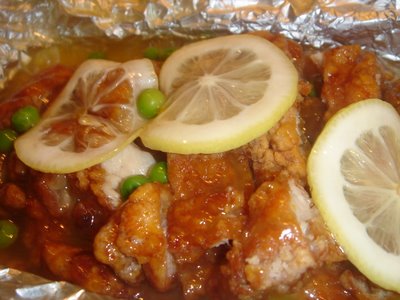
Lemon chicken
The lemon chicken was another highlight of the meal for me, and it’s funny because out of all the dishes, Sarah and I were on the fence about this the most. We were debating on ordering something else instead but finally went with this. The meat was deep-fried but still tender on the inside and was covered in a sweet, slightly tangy sauce.
So we ordered six dishes for four people to share, and the bill came to about 15,000 yen. In other words, this was not a cheap meal! Luckily for us, Sarah’s mom treated. Overall, I thought the meal was pretty good, but I’ve had better Chinese food elsewhere for much less money.
Out of all the cities I have visited with a respectable Chinese restaurant scene – Boston, New York, San Francisco, Vancouver, Sydney, Toronto, and now Tokyo – I would have to say that Toronto offers the best Chinese food. I’ve been to Toronto a few times (before I started my blog), and I’ve always had great meals there. I’m still waiting to visit Hong Kong and mainland China, and I'm really interested to see how the cuisine fares in its natural birthplace.
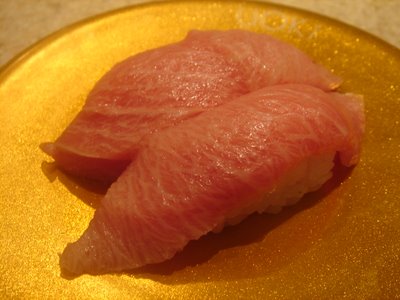




















 Our meal started off with a number of small plates, including edamame, rice rolls, and pickled vegetables. Since we opted for the all-you-can-eat deal, we could have as much lamb and as many of the side dishes as we desired.
Our meal started off with a number of small plates, including edamame, rice rolls, and pickled vegetables. Since we opted for the all-you-can-eat deal, we could have as much lamb and as many of the side dishes as we desired. The quality of the lamb meat was fantastic. The meat came served on trays as shown above and was semi-frozen so the meat could be shaved ultra-thin. The lamb was really fresh and you could eat it raw if you so desired. A lot of people don’t like lamb because of its gamey nature, but there was no such odor with this lamb.
The quality of the lamb meat was fantastic. The meat came served on trays as shown above and was semi-frozen so the meat could be shaved ultra-thin. The lamb was really fresh and you could eat it raw if you so desired. A lot of people don’t like lamb because of its gamey nature, but there was no such odor with this lamb.

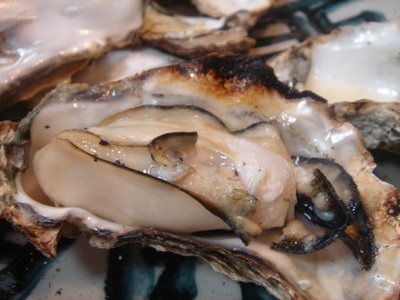



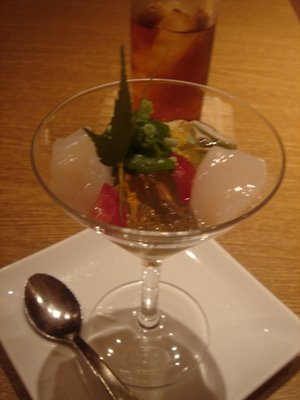



 Our waiter came by with this whole roast pork and carved us each a piece. This was definitely one of my favorites of the night. The seasoning was simple, but it really accentuated the meat and let the natural pork flavor come through. It was also cooked on the rare side to keep the meat moist and tender.
Our waiter came by with this whole roast pork and carved us each a piece. This was definitely one of my favorites of the night. The seasoning was simple, but it really accentuated the meat and let the natural pork flavor come through. It was also cooked on the rare side to keep the meat moist and tender.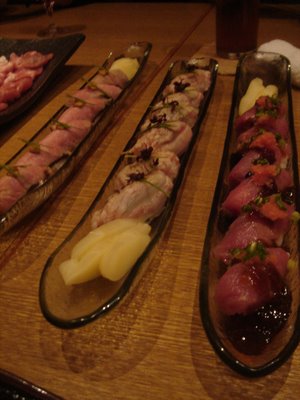


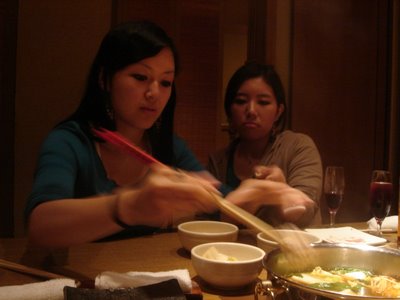
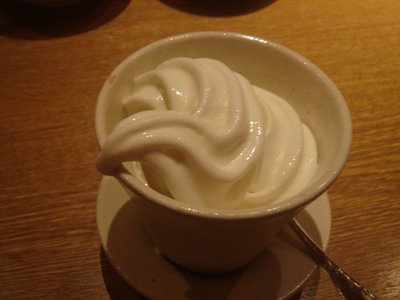 By this time, I was completely stuffed, but there’s always room for dessert, right? We finished the marathon meal with this soft-serve ice-cream. It doesn’t look like anything out of the ordinary, but it was actually really good. The cream used is from Hokkaido where the good stuff is from!
By this time, I was completely stuffed, but there’s always room for dessert, right? We finished the marathon meal with this soft-serve ice-cream. It doesn’t look like anything out of the ordinary, but it was actually really good. The cream used is from Hokkaido where the good stuff is from!